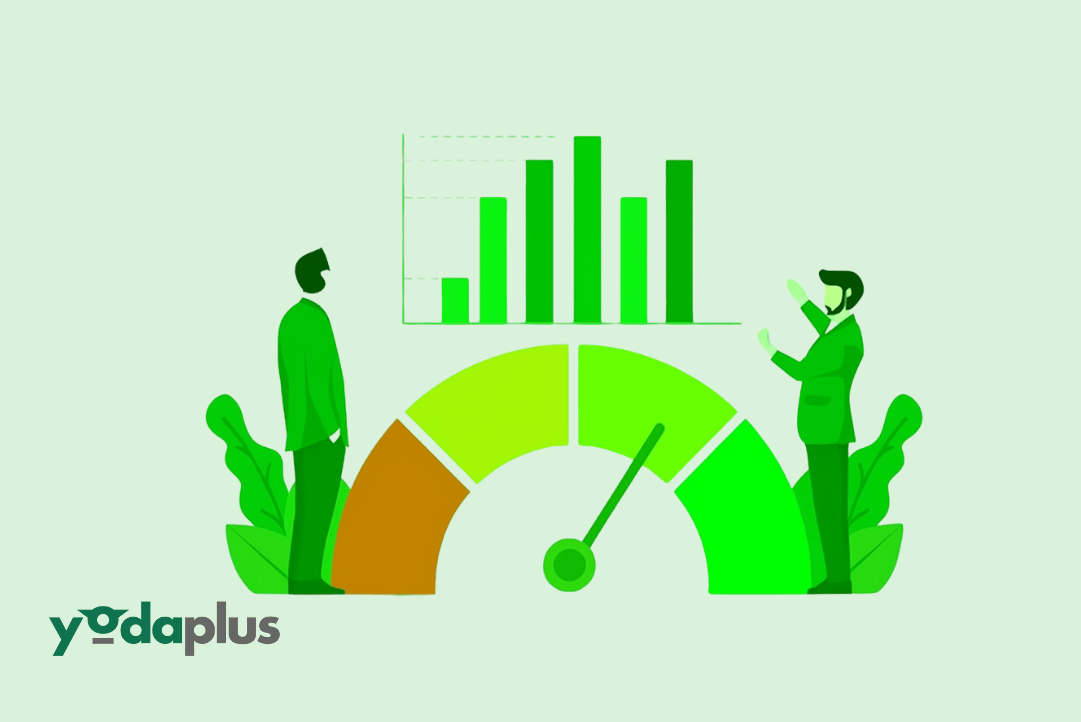
What Is Portfolio Risk Assessment and Why It Matters
August 8, 2025 By Yodaplus
In the world of equity research, success is not just about picking the right stocks. It is about understanding the level of risk in a portfolio and how that risk aligns with investment goals. This process is known as portfolio risk assessment, and it plays a vital role in shaping smart investment strategies.
Risk assessment in a portfolio helps investors and professionals decide how much exposure they have to different market forces. Without it, even the most promising investments can lead to unexpected losses. For financial advisors, portfolio managers, and wealth advisors, this skill is as important as market analysis itself.
Understanding Portfolio Risk Assessment
Portfolio risk assessment is the process of identifying, measuring, and managing the risks that exist in an investment portfolio. It considers various factors, including market volatility, sector exposure, and the performance of individual assets. For those in investment research, this analysis is essential for creating recommendations that align with a client’s risk tolerance.
An equity research report often contains insights into market trends, company performance, and industry outlooks. Alongside this information, an analyst report will also highlight potential risks. This helps asset managers and financial consultants decide how to balance returns against potential losses.
Why It Matters in Equity Research
In equity research automation, data is gathered and analyzed faster than ever before. While automation helps process financial reports and performance data, the human judgment of investment analysts and financial data analysts is still critical for risk assessment. Technology can provide numbers, but the interpretation of those numbers in the context of market movements and client needs requires professional expertise.
The findings from risk assessment influence both short-term and long-term strategies. For example, if an equity research team sees rising volatility in a certain sector, they might recommend reducing exposure in that area. This not only protects the portfolio but also builds trust between wealth managers and their clients.
Key Components of Portfolio Risk Assessment
- Identifying Risk Types
Risks can come from many sources, such as market movements, economic changes, or company-specific issues. A good assessment looks at all possible threats and ranks them by their potential impact. - Quantifying Risks
Tools and models help measure risks using historical data, correlations, and stress testing. These calculations often feature in equity research report findings for easy reference. - Diversification Review
A balanced portfolio spreads risk across industries, geographies, and asset types. Portfolio managers and financial advisors use diversification to reduce the effect of poor performance in one area. - Scenario Analysis
By simulating different market conditions, professionals can see how a portfolio might react. This helps wealth advisors prepare for both expected and unexpected changes.
The Role of Documentation and Reporting
Clear and updated documentation is critical in portfolio risk assessment. Analyst reports and financial reports must be detailed enough for decision-makers to act on. Asset managers rely on this information to adjust positions and maintain the desired risk level.
This is where technology and equity research automation can make a difference. Automated systems can collect data from multiple sources and produce ready-to-use reports, allowing financial consultants and financial data analysts to spend more time on interpretation and strategy.
How Professionals Use Risk Assessment
- Financial Advisors
They use risk assessments to match investments with a client’s goals and tolerance for loss. - Asset Managers
They adjust asset allocations to balance growth and security. - Wealth Managers
They create strategies that preserve wealth over time, especially during market downturns. - Portfolio Managers
They use the findings to decide on asset purchases, sales, or holding patterns. - Financial Consultants
They provide independent evaluations that guide large investment decisions.
In every case, the aim is the same: to understand risks well enough to make informed choices.
Best Practices in Portfolio Risk Assessment
- Regular Reviews
Markets change quickly. Regular assessments ensure that a portfolio remains aligned with both the investor’s objectives and current conditions. - Integrating Equity Research
Using insights from equity research and investment research helps identify new risks and opportunities early. - Combining Automation with Expertise
Automated tools are excellent for speed and accuracy, but they should complement, not replace, the insight of experienced professionals. - Clear Communication
Explaining risk levels in simple terms helps clients feel more confident in their investments. This is especially important for wealth managers and financial advisors building long-term relationships.
Final Thoughts
Portfolio risk assessment is a cornerstone of modern investing. It is not only about protecting against losses but also about creating strategies that work in changing markets. By combining equity research report findings, insights from analyst reports, and advanced equity research automation tools like GenRPT Finance by Yodaplus, professionals such as asset managers, financial consultants, and portfolio managers can provide stronger, more reliable guidance.
In the end, good risk assessment leads to better decision-making, stronger portfolios, and more confident investors. For wealth advisors, financial data analysts, and others in the field, mastering this process is essential for long-term success.